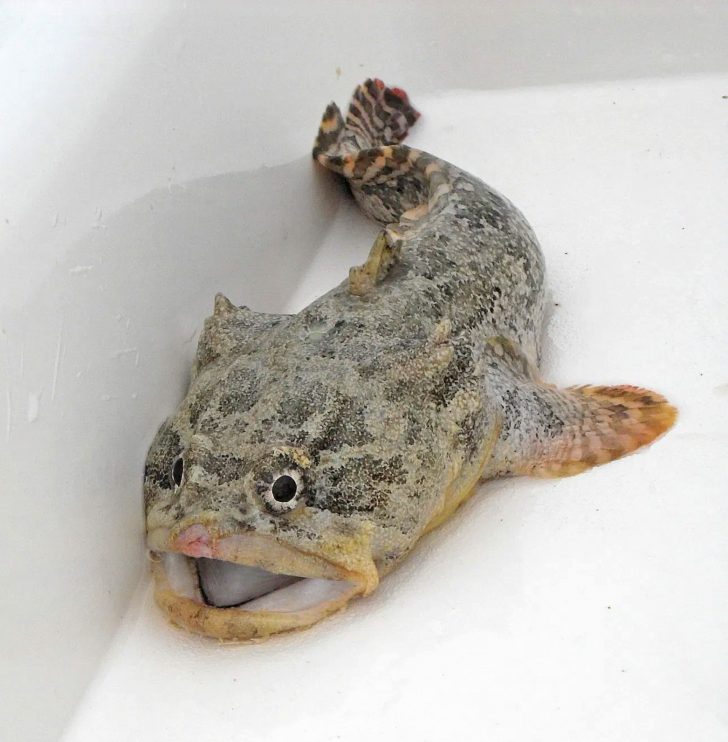
The Gulf Toadfish, Opsanus beta, is a member of the Toadfish or Batrachoididae Family, and is known in Mexico as sapo boquiblanc and sapo de boca blaca. Globally, there are only five species in the genus Opsanus, three of which are found in Mexican waters, all in the Atlantic Ocean.
The Gulf Toadfish have rounded flattened bodies. Their head and body are a brownish gray with brown, tan, and white mottling. Their coloration is darker and more uniform on their head and the front of their body. Toward the rear of their body, the pale areas are rosette-shaped. They have brown diagonal bands on their anal and dorsal fins and vertical bars made up of small spots across their caudal and pectoral fins. The inside of their mouth is pale or white. They have a large flattened head with a strongly projecting lower jaw which has fleshy tabs and a blunt barbel. Their mouth is wide and equipped with numerous sharp teeth. They feature 3 lateral lines. Their elongated anal fin has 3 spines and 19 to 25 rays; their first dorsal fin has 3 spines and their second dorsal fin is elongated with 23 to 26 rays; their large fan-like pectoral fins are set behind their small pelvic fins, which have 18 or 19 rays. They are scaleless.
The Gulf Toadfish are bottom dwellers found within seagrass beds and rocky reefs in coastal bays and lagoons at depths up to 9 m (30 feet). They reach a maximum of 38 cm (15 inches) in length, with males being larger than females. As of October 15, 2019, the International Game Fish Association world record stood at 0.54 kg (1 lb 3 oz) with the fish caught in coastal waters off Port Aransas, Texas in October 2013. They are voracious predators consuming small fish, crustaceans, annelids, and mollusks. Their spines are non-venomous. They are preyed upon by barracuda and other large fish and by marine mammals such as dolphins and sea turtles. They spawn in the spring with nests established in shells and sponges. Males have a specialized swim bladder producing sounds known as “boatwhistles”, which are associated with courtship, spawning, parental, aggressive and territorial behavior. After mating, the males guard the eggs until hatched.
The Gulf Toadfish is a resident of all Mexican waters of the Atlantic Ocean including the Gulf of Mexican and the Caribbean.
The Gulf Toadfish is similar to and can be easily confused with the Leopard Toadfish, Opsanus pardus (dense spotting on the head and body; pectoral fins with mottling.
From a conservation perspective the Gulf Toadfish is currently considered to be of Least Concern with stable, widely distributed populations. They are not regulated and not a focus of game or commercial fishing but are marketed fresh or live on a limited basis in such places as Chinatown in New York City. They are known to contain ciguatoxin. They are generally considered trash fish and are normally discarded.